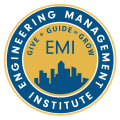Imagine trying to keep up with the latest tech trends in the AEC industry while your old set of skills is still stuck in the previous decade. Sound familiar? Well, that’s where upskilling and reskilling come in handy—the secret weapons for keeping teams sharp, adaptable, and just a little ahead of the curve. They’re no longer just buzzwords; they’ve become a critical component of workforce development across all industries, especially as new tools and technologies disrupt the status quo. Organizations that invest in these learning strategies aren’t just surviving—they’re thriving, ready to face whatever the future throws their way.
The Role of Upskilling and Reskilling in Learning & Development
Learning and Development (L&D) professionals are at the forefront of this transformation. Upskilling involves enhancing employees’ existing skills to perform their current roles more effectively, often through advanced training or certification. Conversely, reskilling focuses on equipping workers with entirely new skills to prepare them for different roles within the organization, especially as automation and digital tools alter traditional job functions.
L&D strategies now emphasize personalized learning paths, digital learning platforms, and micro-credentials to facilitate continuous development. The goal is to create a flexible and adaptable workforce capable of navigating ongoing industry shifts.
Impact on the Architecture, Engineering, and Construction Industry
For the AEC industry, the need for upskilling and reskilling is particularly dire. Rapid technological innovations such as Building Information Modeling (BIM), digital twin technology, 3D printing, and smart building systems are transforming project delivery and management. Another thing to note is that these and other technological advancements are reshaping job requirements, driving the need for continuous learning and skill development to adapt to market changes.
Why AEC Needs Upskilling and Reskilling
- Adoption of New Technologies: Professionals in architecture, engineering, and construction are required to understand and utilize advanced tools that can significantly improve productivity, accuracy, and sustainability.
- Changing Skill Sets: Traditional skills are no longer sufficient. There is a high demand for expertise in digital design, data analysis, automation, and sustainable practices.
- Labor Shortages, Workforce Development, and Employee Retention: As experienced workers retire, reskilling initiatives help transfer knowledge and expand the talent pool of qualified professionals. This also can aid in employee retention through clear career progression.
- Safety and Compliance: Evolving regulations and safety standards demand ongoing training to mitigate risks on complex projects.
- Operational Efficiency: Skill-focused organizations are more agile and responsive to industry shifts.
Forward-Looking Trends
Many forward-thinking companies and industry groups are now championing continuous learning through a variety of innovative approaches—think online courses, simulation-based training, and industry-specific certifications. These tools make upskilling and reskilling more accessible than ever, allowing workers to learn at their own pace and on their own terms. Governments and industry associations are also stepping up, supporting workforce development initiatives designed to bridge skill gaps and keep the industry resilient and forward-looking.
For companies and individuals eager to jump on this bandwagon, the key is to create a culture of ongoing learning. This can start with simple steps like offering access to online training platforms or encouraging employees to pursue relevant certifications. For more strategic impact, organizations can pair digital learning with hands-on simulations or real-world projects to reinforce new skills. Individuals, on their part, should stay curious, leverage available resources, and seek out opportunities to grow—because in a world of constant change, those who never stop learning are the ones who will lead the charge.
Conclusion
Upskilling and reskilling are vital strategies in both the broader learning and development landscape and the dynamic world of architecture, engineering, and construction. They empower organizations to thrive amid technological advances and market shifts, fostering a future-ready workforce.
Sources
Schreiber-Shearer, N. (2024). Importance of upskilling in preparing for the future of work. Gloat
Davey, K. (2024). The importance of upskilling and reskilling your employees. Docebo.
Duchene, K. (2024). The Rise of Upskilling and Continuous Learning in a Slow Labor Market. Forbes.
Robinson, C. (2024). Reskilling vs. Upskilling: Learning Key Differences for Career Growth. Forbes
World Economic Forum (2025). Reskilling Revolution: Preparing 1 billion people for tomorrow’s economy. World Economic Forum
Pappas, C. (2024). Top Content Providers for Upskilling and Reskilling Employees (2024 Update). eLearning Industry.
AEC PM Certification
AEC PM Connect
Project Management Accelerator™
Engineering Leadership Accelerator™
Keynote Speaking
About the Author:
Most recently, during his time working for the public sector, he has taken the role of Public Works Operations Manager. There he led quite a few public infrastructure rehabilitation projects and implemented new asset management technologies at a very young age. It is here that the passion for “fixing what’s broken” has developed.
Please leave your comments, feedback or questions in the section below.







